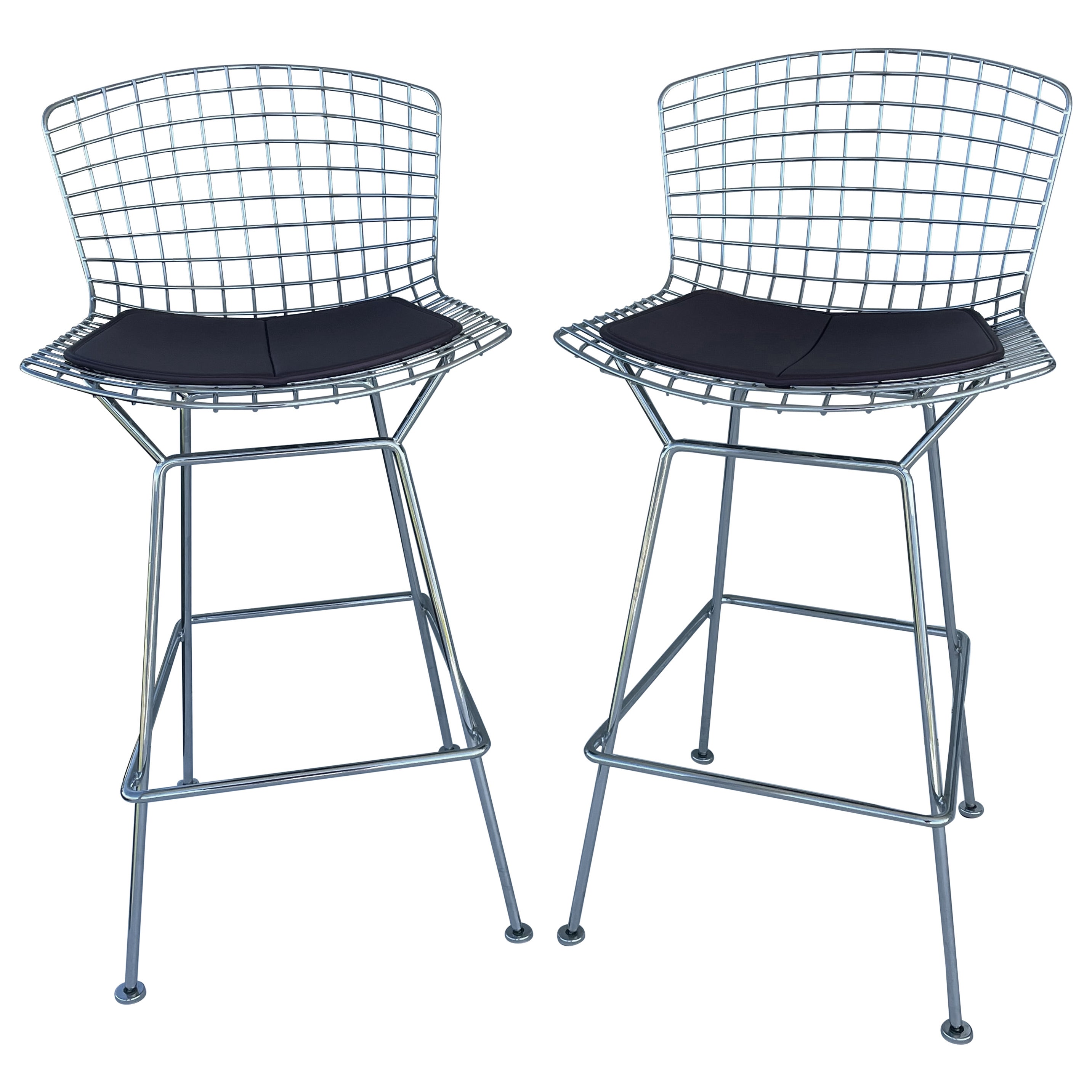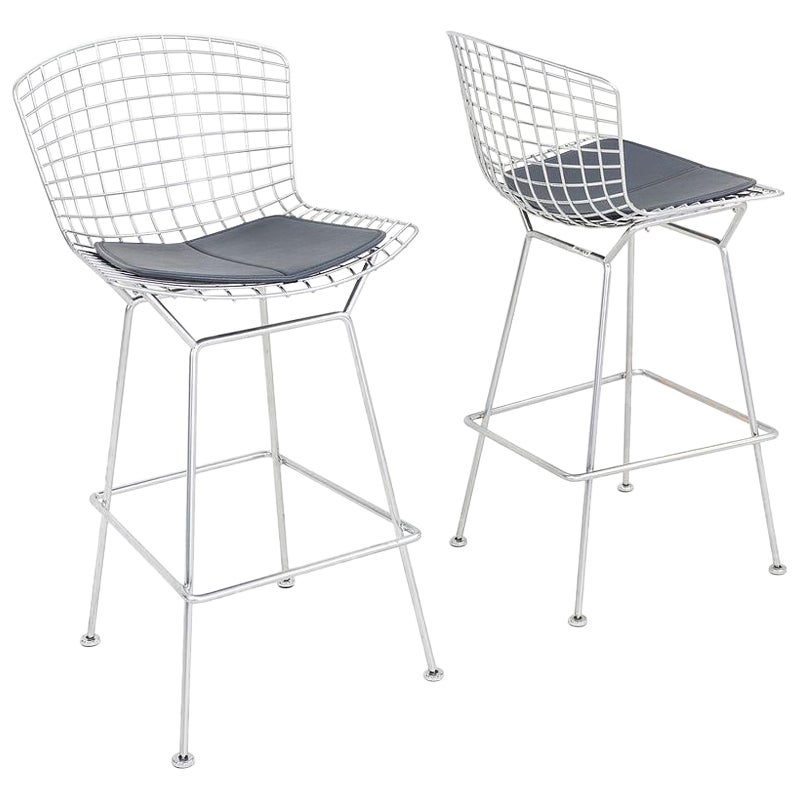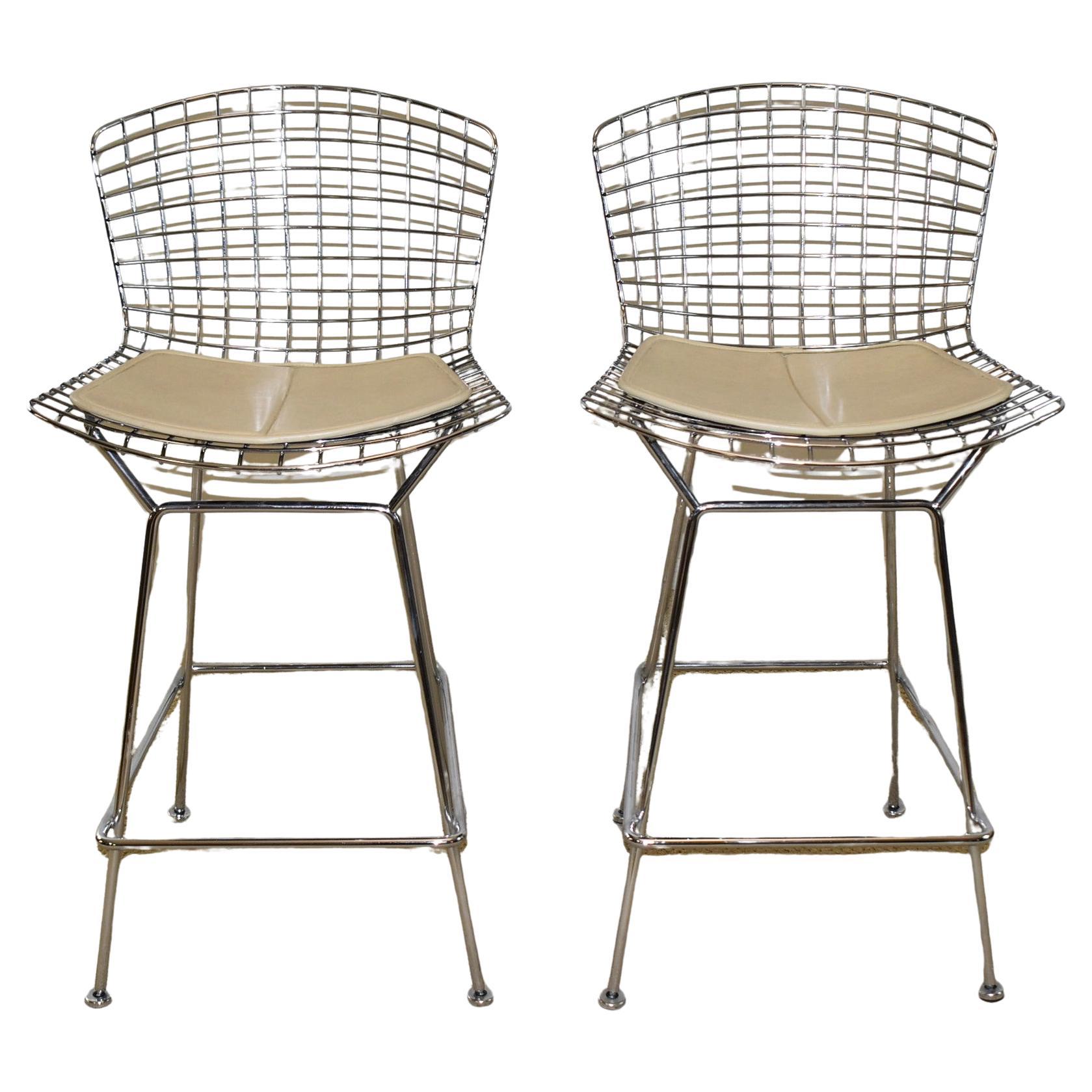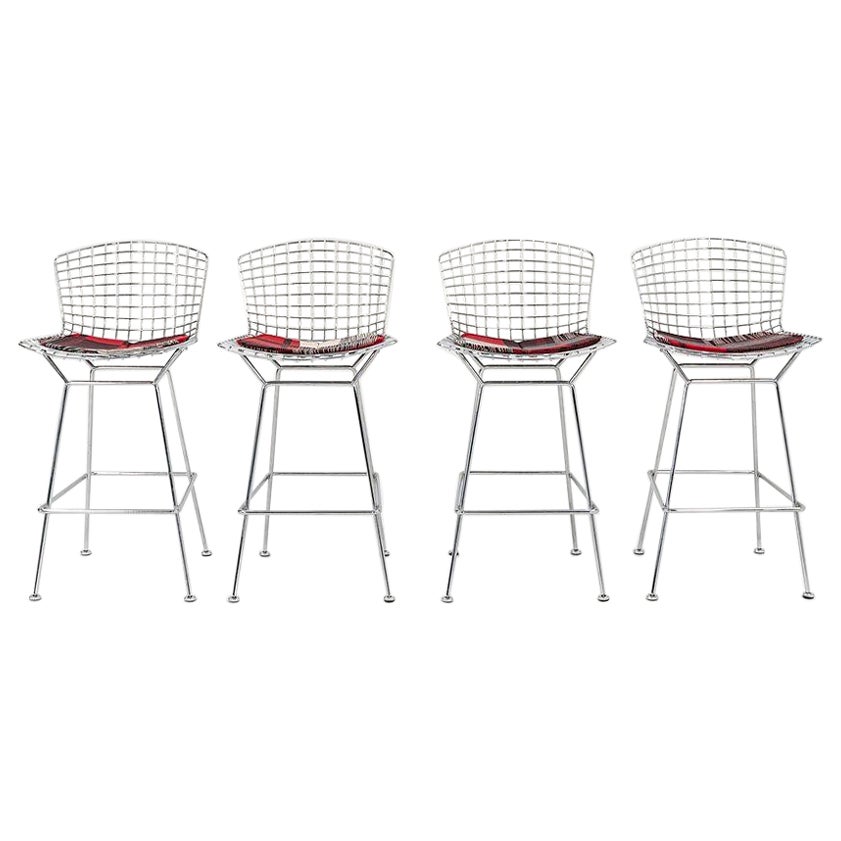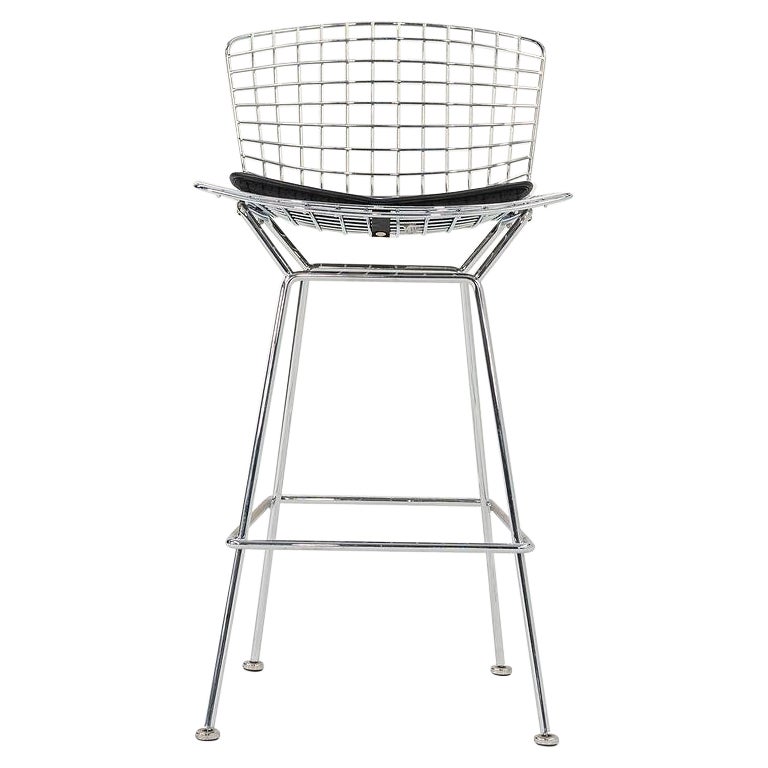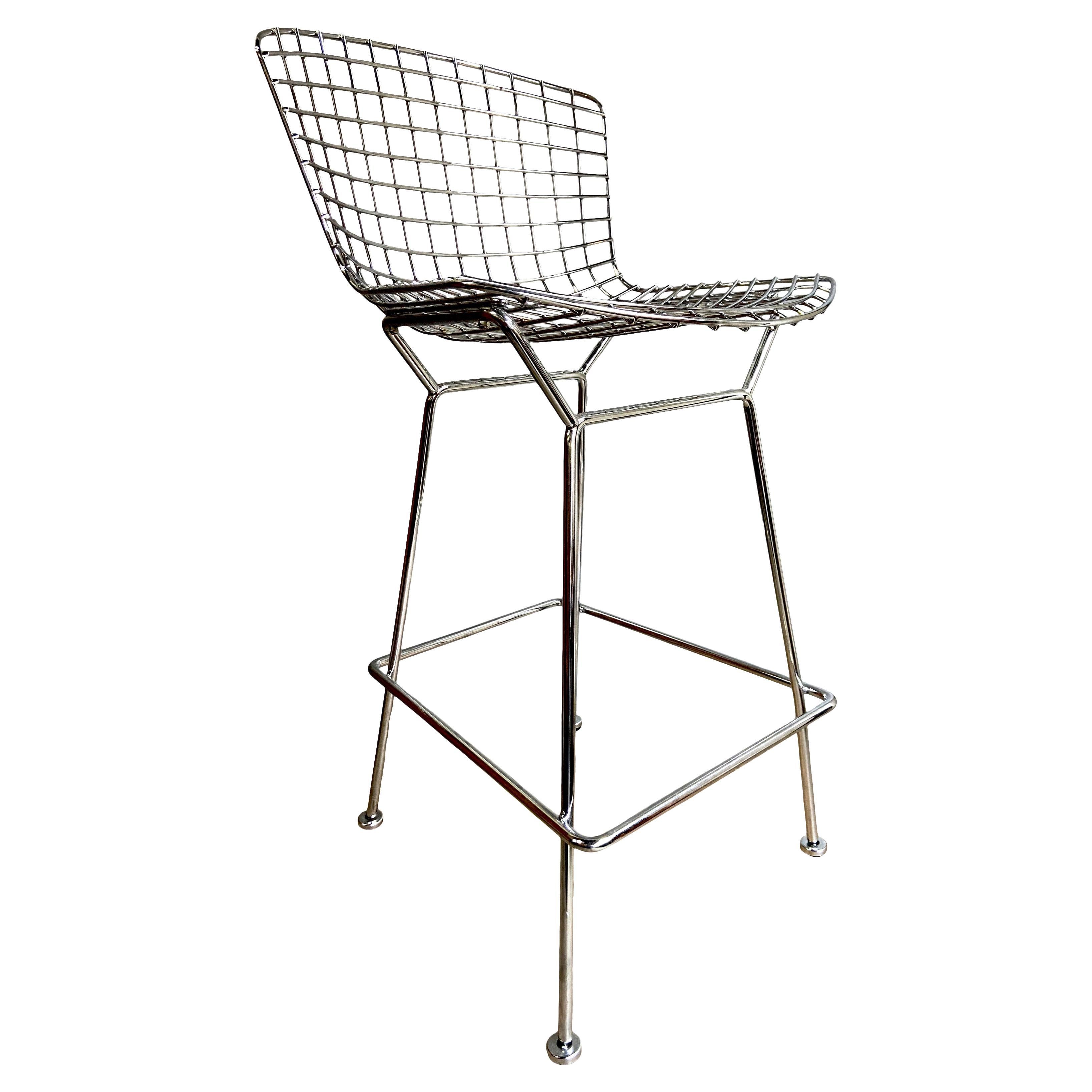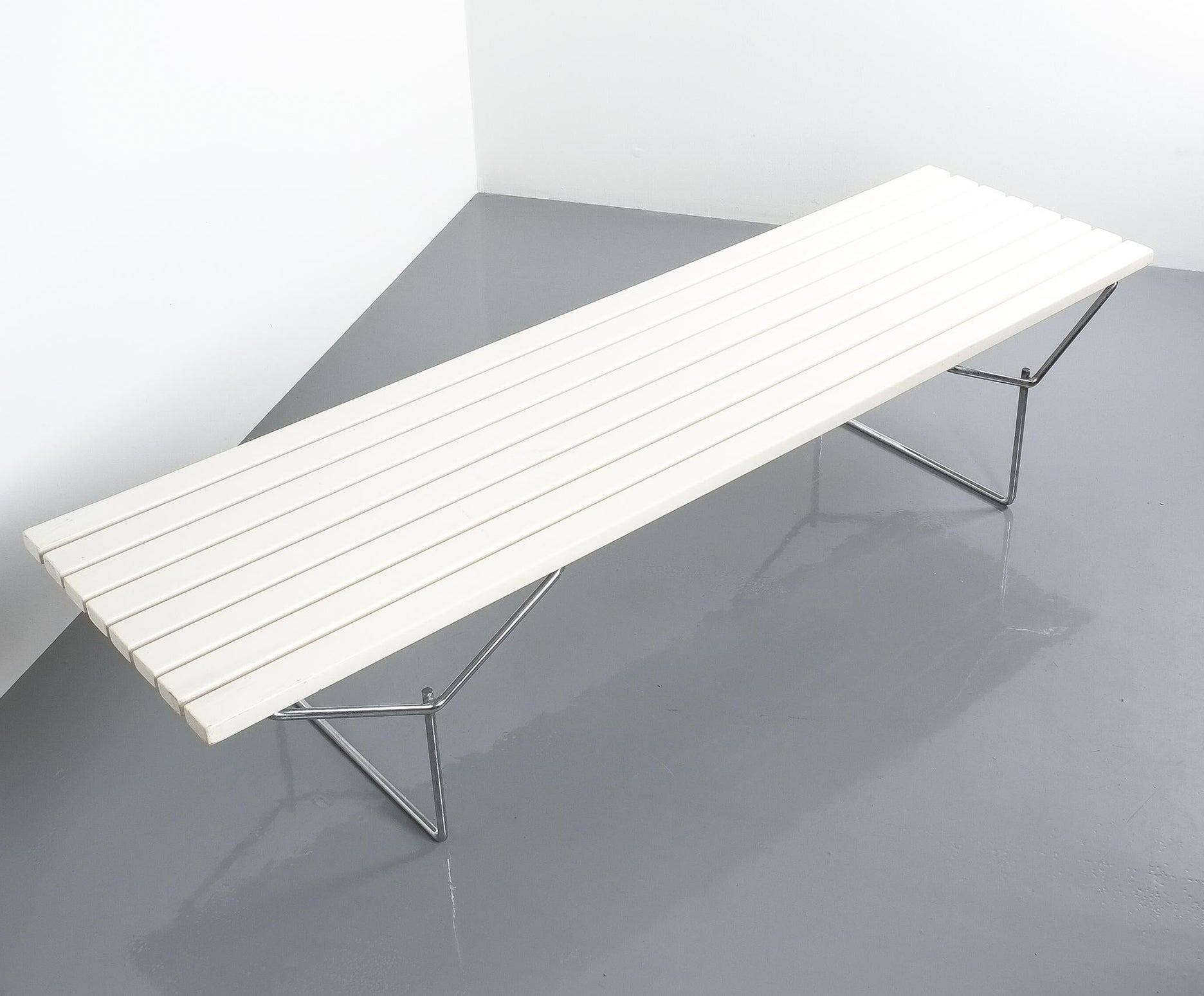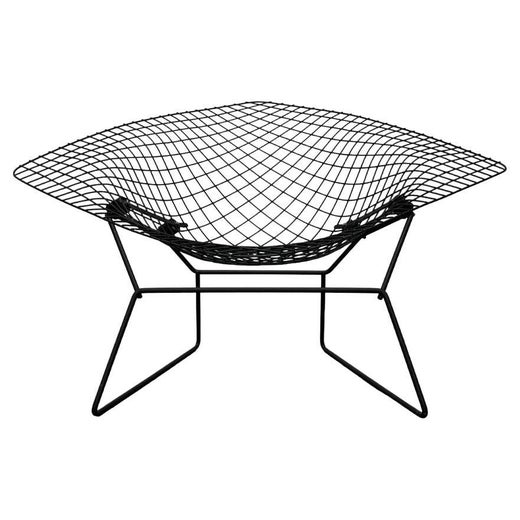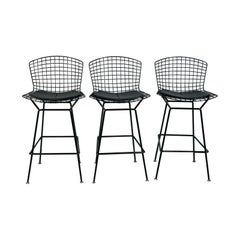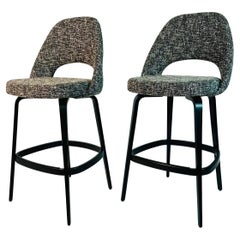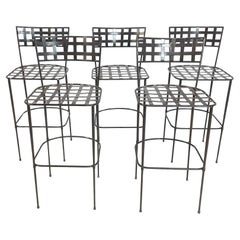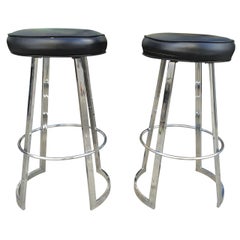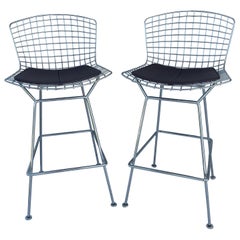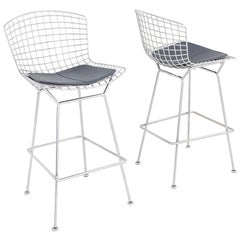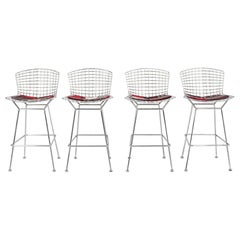Pair of Harry Bertoia Wire Barstools for Knoll With Red Pads, Signed
About the Item
- Creator:Knoll (Manufacturer),Harry Bertoia (Designer)
- Design:
- Dimensions:Height: 41.5 in (105.41 cm)Width: 21.25 in (53.98 cm)Depth: 21.5 in (54.61 cm)Seat Height: 29 in (73.66 cm)
- Sold As:Set of 2
- Style:Mid-Century Modern (In the Style Of)
- Materials and Techniques:
- Place of Origin:
- Period:
- Date of Manufacture:2021
- Condition:Wear consistent with age and use. The stools show little to no wear, one seat is missing a glide to the leg.
- Seller Location:Los Angeles, CA
- Reference Number:1stDibs: LU881740801502
Bertoia Bench
Simple, straightforward and unassuming in its clever design, the Bertoia bench is a hallmark mid-century modern piece. Harry Bertoia (1915–78) was an Italian-American sculptor, jewelry designer and furniture maker who developed his famous bench for Knoll in 1952. Made of slatted wood set atop a chrome-plated welded steel frame, the bench was Bertoia’s first product for Knoll, who granted him creative freedom when he joined the company’s studio in 1950. While the piece does not represent Bertoia’s now-famous signature wire-lattice style, it does hint at the sculptural quality that characterizes all of his work.
Before arriving at Knoll, Bertoia studied painting at Cranbrook Academy of Art. He eventually became a faculty member there, working alongside Eliel Saarinen, Walter Gropius and others. Bertoia eventually left the academy for California to help Charles and Ray Eames perfect the design of an award-winning chair that Charles had worked on with Eero Saarinen while at Cranbrook. It was thanks to Bertoia’s breakthrough welding contributions and innovations with plywood that cleared a path to mass production for both the chair and other wood-laminate furniture. However, the Eameses failed to credit Bertoia once the chair hit the market, thus ending the trio’s working relationship. A few years later, Bertoia joined the Knoll studio at the behest of his former Cranbrook classmate, Florence Knoll, and there he produced the bench as well as the beloved Diamond chair. Sculptural and versatile, the Bertoia bench can also be used as a coffee table. It is still manufactured by Knoll today.
Harry Bertoia
Sculptor, furniture and jewelry designer, graphic artist and metalsmith, Harry Bertoia was one of the great cross-disciplinarians of 20th-century art and design and a central figure in American mid-century modernism. Among furniture aficionados, Bertoia is known for his chairs such as the wire-lattice Diamond chair (and its variants such as the tall-backed Bird chair) designed for Knoll Inc. and first released in 1952.
As an artist, he is revered for a style that was his alone. Bertoia’s metal sculptures are by turns expressive and austere, powerful and subtle, intimate in scale and monumental. All embody a tension between the intricacy and precision of Bertoia’s forms and the raw strength of his materials: steel, brass, bronze and copper.
Fortune seemed to guide Bertoia’s artistic development. Born in northeastern Italy, Bertoia immigrated to the United States at age 15, joining an older brother in Detroit. He studied drawing and metalworking in the gifted student program at Cass Technical High School. Recognition led to awards that culminated, in 1937, in a teaching scholarship to attend the Cranbrook Academy of Art in suburban Bloomfield Hills, one of the great crucibles of modernism in America.
At Cranbrook, Bertoia made friendships — with architect Eero Saarinen, designers Charles and Ray Eames and Florence Schust Knoll and others — that shaped the course of his life. He taught metalworking at the school, and when materials rationing during World War II limited the availability of metals, Bertoia focused on jewelry design. He also experimented with monotype printmaking, and 19 of his earliest efforts were bought by the Guggenheim Museum.
In 1943, he left Cranbrook to work in California with the Eameses, helping them develop their now-famed plywood furniture. (Bertoia received scant credit.) Late in that decade, Florence and Hans Knoll persuaded him to move east and join Knoll Inc. His chairs became and remain perennial bestsellers. Royalties allowed Bertoia to devote himself full-time to metal sculpture, a medium he began to explore in earnest in 1947.
By the early 1950s Bertoia was receiving commissions for large-scale works from architects — the first came via Saarinen — as he refined his aesthetic vocabulary into two distinct skeins. One comprises his “sounding sculptures” — gongs and “Sonambient” groupings of rods that strike together and chime when touched by hand or by the wind. The other genre encompasses Bertoia’s naturalistic works: abstract sculptures that suggest bushes, flower petals, leaves, dandelions or sprays of grass.
As you will see on these pages, Harry Bertoia was truly unique; his art and designs manifest a wholly singular combination of delicacy and strength.
Find vintage Harry Bertoia sculptures, armchairs, benches and other furniture and art on 1stDibs.
- ShippingRetrieving quote...Shipping from: Los Angeles, CA
- Return Policy
More From This Seller
View All21st Century and Contemporary American Mid-Century Modern Stools
Steel
21st Century and Contemporary American Mid-Century Modern Stools
Fabric, Wood
1990s American Mid-Century Modern Stools
Steel
20th Century American Mid-Century Modern Stools
Chrome
Vintage 1970s American Mid-Century Modern Stools
Steel
2010s American Post-Modern Stools
Steel
You May Also Like
Mid-20th Century Mid-Century Modern Stools
Steel, Chrome
2010s American Modern Stools
Steel
20th Century North American Mid-Century Modern Stools
Chrome
2010s American Modern Stools
Steel
2010s American Modern Stools
Steel
Early 2000s American Mid-Century Modern Stools
Steel, Stainless Steel, Chrome
Read More
At Hosfelt Gallery, Bertoia Masterworks Complement Dynamic Contemporary Art
For nearly three decades, San Francisco–based Todd Hosfelt has curated against the grain — with a show on the legendary modernist Harry Bertoia the latest case in point.
The 21 Most Popular Mid-Century Modern Chairs
You know the designs, now get the stories about how they came to be.
